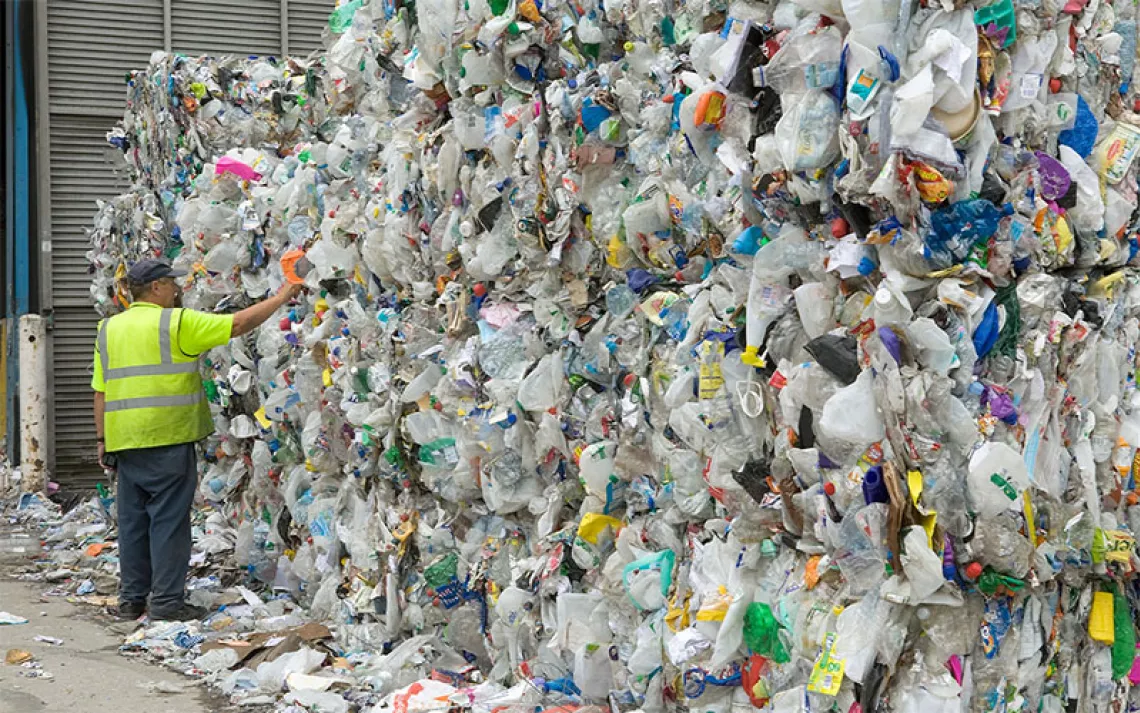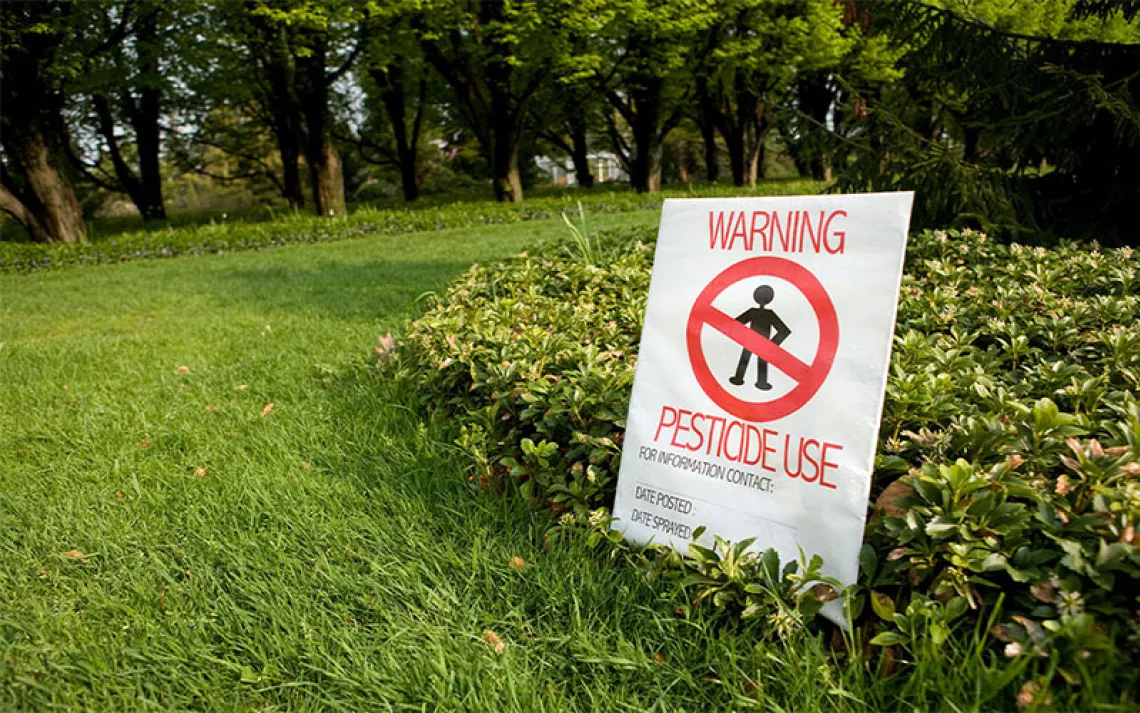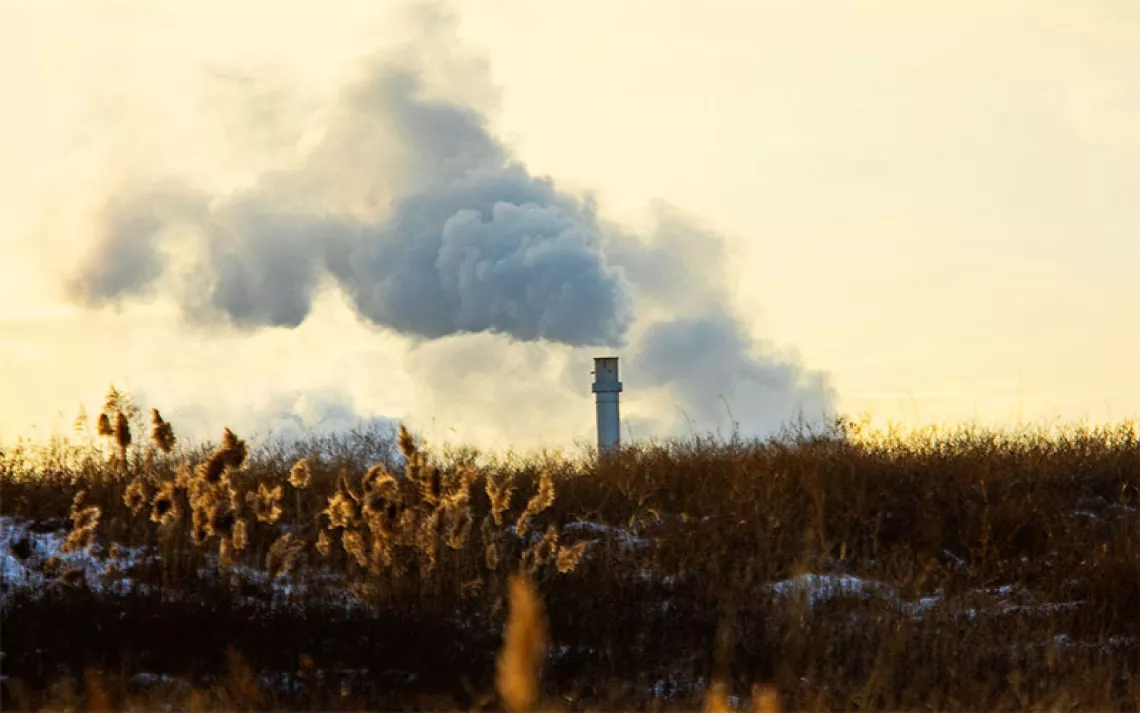America's Overwhelming PFAS Problem
The synthetic chemicals are everywhere and everlasting

The improper disposal of materials containing PFAS has contaminated the drinking water of millions of Americans. | Photo by Nic Antaya/MLive.com
Sandy Wynn-Stelt and her husband, Joel, bought their house near Rockford, Michigan (population 6,000), in 1992 because of the quaint rural setting: Christmas tree farms nearby and wild turkeys in the front yard. They lived there happily until March 2016, when Joel died suddenly of liver cancer. A year later, Michigan's environmental agency showed up on the doorstep to test Wynn-Stelt's well water. That's when the still-grieving Wynn-Stelt learned that her house sat across the street from an old dump site of a now-defunct leather tannery. The tannery had used PFAS to waterproof its shoes, and the chemicals had been seeping into the area's groundwater for years.
PFAS, or per- and polyfluoroalkyl substances, are a group of over 5,000 synthetic chemicals that have been manufactured in the United States for decades by a trio of corporations: 3M, DuPont, and DuPont's subsidiary Chemours. Nicknamed "forever chemicals," PFAS don't biodegrade—and even when burned in an industrial incinerator, their core molecules can persist and spread further into the environment, putting humans and wildlife at risk.
PFAS bioaccumulate in humans, especially in the liver, and exposure has been linked to cancer, thyroid disease, high cholesterol levels, and complications during pregnancy. While she can't prove it, Wynn-Stelt thinks that the chemicals contributed to her husband's death. The two had been consuming water with levels of contamination more than 500 times that recommended by the EPA. The level of PFAS in Wynn-Stelt's blood is 750 times that of the average citizen. "I'm at the point where I would not be surprised if it kills me," she says.
Astonishingly prevalent, PFAS are found in many consumer products, including fast-food packaging, cooking pots sealed with Teflon, carpet coated with Scotchgard, and water-resistant outdoor gear made with Gore-Tex. The chemical family has turned up in artificial turf—used in over 12,000 sports fields around the country—and biosolids (treated sewage sludge used as crop fertilizer). One of the most widespread applications of PFAS is in firefighting foam, which is used at commercial airports and over 425 military sites and is responsible for contaminating groundwater throughout the country.
According to the Environmental Working Group, as many as 110 million Americans may be drinking PFAS-contaminated water, and over 99 percent of US residents have some variant of PFAS in their blood. Still, the EPA has yet to establish an acceptable limit for contamination under the federal Safe Drinking Water Act. So far, it has issued only unenforceable recommendations for two of the 5,000-plus known compounds.
The lack of federal regulation has left state and local governments scrambling to confront the problem on their own. In 2018, Michigan became the first state to conduct comprehensive testing for PFAS in all its public water supplies. The chemicals were detected in the municipal water systems of 120 towns and in 41 schools. The executive director of the Michigan PFAS Action Response Team, Steve Sliver, is pushing for a statewide drinking-water standard that is stricter and more comprehensive than the EPA's. "The traditional, national model hasn't worked," Sliver says. "We've got scientists telling us these contaminants adversely impact human health at levels lower than what the EPA has suggested."
At least a dozen other states, including Colorado, Arizona, and Kentucky, have adopted some form of PFAS policy, and almost a dozen more are considering doing the same. Meanwhile, a number of state and local governments as well as private citizens have sought to hold those responsible for contamination accountable through the legal system. According to court documents, scientists at 3M and DuPont discovered that PFAS were toxic and bioaccumulative over 70 years ago but kept this information secret. In 2018, Minnesota received $850 million from 3M in a historic settlement. The money will be invested in statewide projects to provide clean drinking water. In Delaware, a handful of residents are suing manufacturers for contaminating their small town's drinking water with PFAS, and in New York, the governor and the attorney general are suing six corporations responsible for PFAS contamination from firefighting foam on military bases.
But while a patchwork of state regulations and courtroom trials continues to materialize around the country, leadership at the federal level remains lacking. Advocates had pinned their hopes to the National Defense Authorization Act when it was up for renewal last fall. The bill included measures to address the PFAS crisis, such as establishing nationwide contamination limits and classifying PFAS as hazardous substances (which would force the cleanup of contaminated sites and compel polluters to pay the costs). Such regulation had garnered some bipartisan support thanks largely to pressure from military families affected by PFAS contamination, but when the bill passed in December, most of the measures had been removed or significantly watered down.
The American Chemistry Council has worked fervently to block both state and federal legislation, spending over $14 million between 2018 and 2019 lobbying Congress. Meanwhile, the EPA was supposed to issue a draft of regulations by the end of 2019 to set limits under the Safe Drinking Water Act for two of the most widely used PFAS compounds—PFOA and PFOS—but failed to do so. In January, the House of Representatives revived the effort to enact PFAS legislation, voting 247 to 159 in favor of a bill regulating contamination, but the measure is unlikely to pass in the Republican-controlled Senate.
Last July, Wynn-Stelt testified before Congress, pleading for action on PFAS contamination so taxpayers aren't on the hook for the cleanup costs. She says that the only currency she has left is to tell her story and to keep pushing for federal regulation. "The responsible parties need to be held responsible," she says, "but the bottom line is the chemicals never should've been manufactured and dumped in the first place."
This article appeared in the March/April 2020 edition with the headline "America's PFAS Problem."
This article has been updated since publication.
MORE
Read about how other Michigan residents are fighting PFAS at sc.org/michigan-pfas.
 The Magazine of The Sierra Club
The Magazine of The Sierra Club



